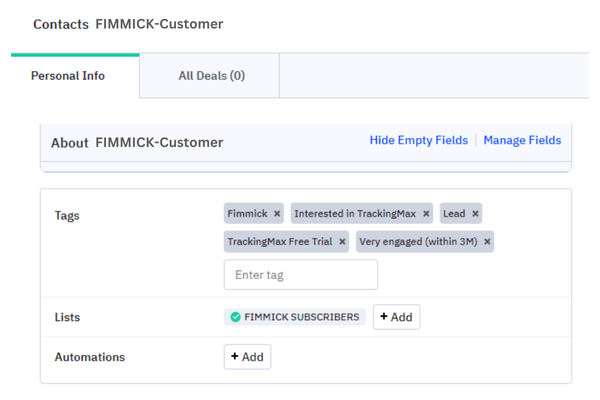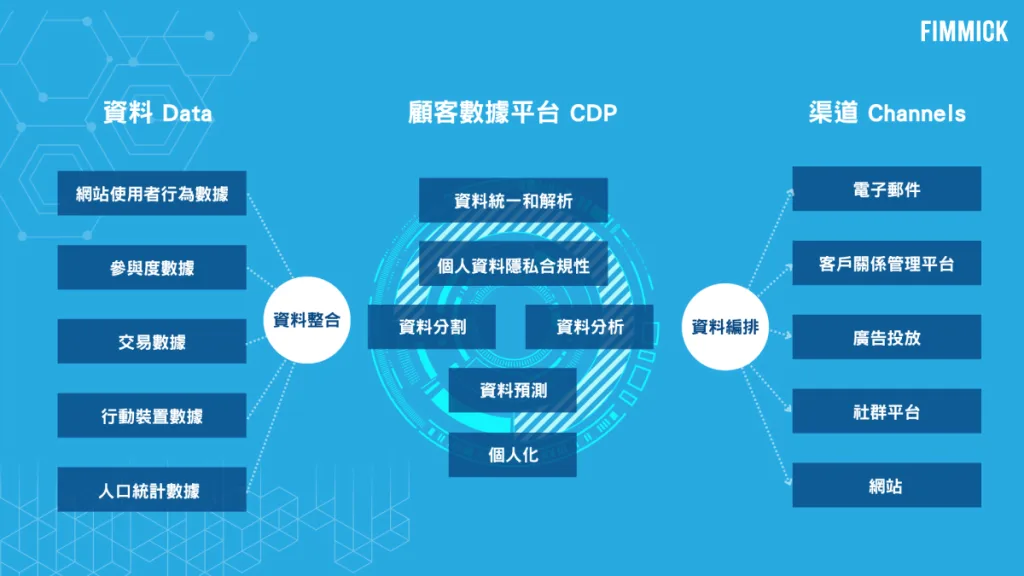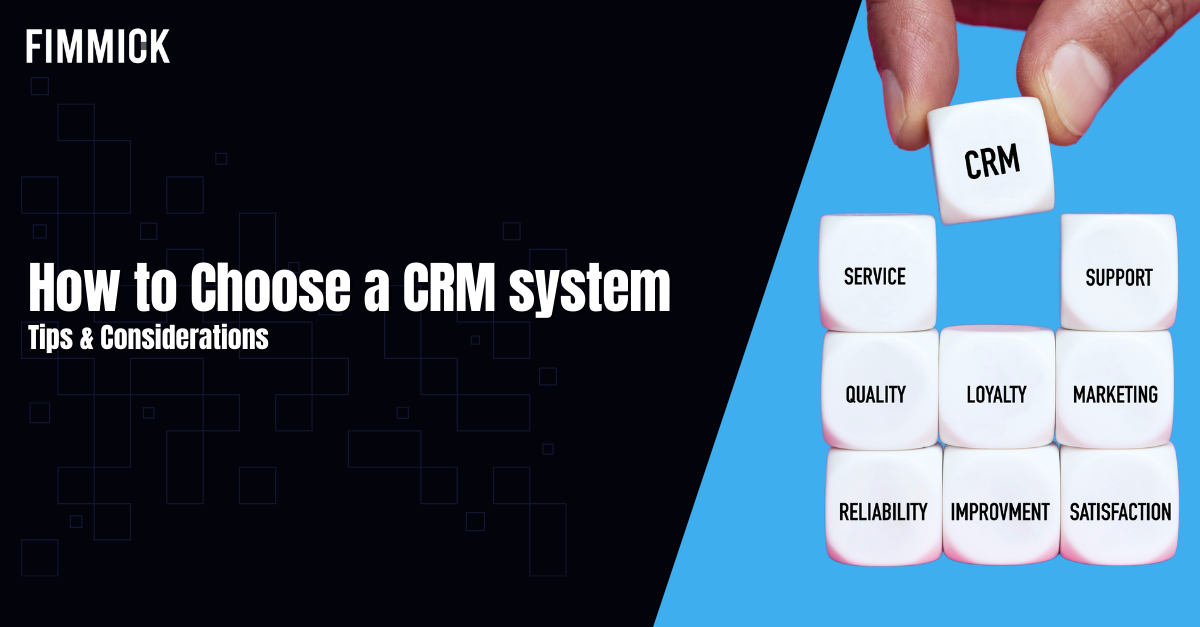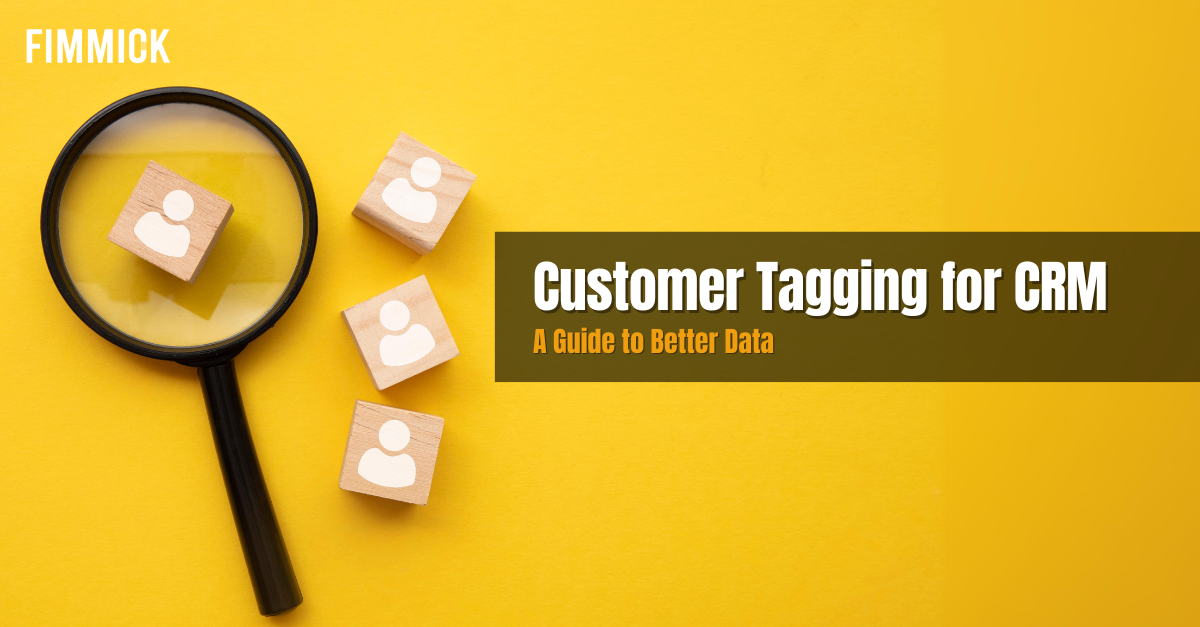CRM : Customer Tagging for CRM – A Guide to Better Data
Reading Time: 5 min
Is your CRM system bursting with customer data? Are you struggling to connect with your audience meaningfully? The solution might be simpler than you think. Customer tagging offers a powerful way to unlock the true potential of your CRM by organising and categorising your contacts for deeper insights. By understanding the power of customer tagging, you can boost CRM efficiencies and nurture more robust relationships with your customers.
What is Customer Tagging?
Customer tagging involves adding descriptive labels, or “tags,” to customer profiles within a customer relationship management (CRM) system, customer data platform (CDP), or other types of customer databases. These tags allow brands to record a customer’s interests, behaviours and interactions, providing valuable insights into individual customer behaviours, preferences, and characteristics.
For instance, a customer who consistently purchases running shoes could be tagged as a “Running Enthusiast,” while someone who frequently abandons their online shopping cart might be tagged as a “Cart Abandoner.”
Each interaction a customer has with your brand, from browsing products and making purchases to opening emails, presents an opportunity to apply relevant tags. This process gradually builds a comprehensive history of each customer’s engagement with your brand.

Types of Customer Tags
Demographic Tags
These tags capture basic customer information, such as age, gender, location, occupation, or family status. This information helps you create broad customer segments and tailor your messaging to resonate with specific demographics.
Behavioural Tags
These tags track how customers interact with your business. Examples include purchase history (products purchased, amount spent), browsing behaviour (pages visited, products viewed), and engagement frequency (website visits, email opens). Behavioural tags offer insights into customer preferences and purchase patterns.
Interest Tags
These tags identify a customer’s interests and affinities. This could include hobbies, favourite product categories, brand preferences, or lifestyle choices. Interest tags help you create highly targeted marketing campaigns and recommendations that align with customer passions.
In essence, customer tagging transforms a CRM system from a static repository of customer data into a dynamic tool for fostering deeper customer relationships and driving business growth.
Further Reading: What is the Five Moments of Truth?
Customer Tagging in Digital Marketing
Precision Email Marketing
Trigger and drip marketing rely heavily on customer tags to monitor, initiate, and track individual customer interactions, feeding valuable data into the CRM system. For example, when a customer views a specific product, a tag can trigger an email featuring a promotion for that item. Similarly, if a customer adds an item to their cart but doesn’t complete the purchase, a tag can trigger an immediate reminder email.
Nurturing Potential B2B Clients
Customer tagging is crucial for B2B businesses looking to cultivate relationships with potential clients. Accurate customer tags provide sales teams with immediate access to a prospect’s engagement history, including past purchases and areas of interest. This empowers sales representatives to address inquiries efficiently, offer tailored solutions, and provide a higher level of personalised service in subsequent interactions. Ultimately, this targeted approach leads to increased conversions and strengthens customer loyalty.
Further Reading: What is Trigger 和 Drip Marketing?
Customer Tagging in Customer Relationship Management (CRM)
Analysing Past Customer Behaviour
Businesses can gain valuable insights into customer habits, preferences, and needs by analysing behavioural data associated with different customer tags. This data-driven understanding can inform product development, refine marketing strategies, and enhance customer service. For example, examining customers’ purchase patterns tagged as “Frequent Discount Shoppers” can reveal insights into their price sensitivity and purchasing motivations.
Further Reading: What is Identity Stitching?
Predicting Future Customer Needs
Combining historical data with customer tags enables businesses to build predictive models that forecast future sales trends and anticipate customer needs. This allows companies to adjust their strategies and inventory proactively. For instance, by analysing customers’ purchase history as “Loyal Customers,” businesses can identify potential best-selling products and optimise their stock accordingly.
Precise Customer Segmentation
Tags empower businesses to segment their customer base into distinct groups based on shared characteristics and behaviours. This granular segmentation facilitates a deeper understanding of each group’s unique needs and preferences, leading to more effective marketing campaigns and targeted communication. For example, customers can be segmented into groups like “Snack Lovers” and “Health-Conscious Eaters” based on their purchase history. Similarly, customers can be categorised as “High-Value Customers,” “Potential High-Value Customers,” or “Regular Customers” based on their purchase frequency and spending habits, allowing for tailored customer relationship management strategies.

The Power of AI in Customer Tagging
Manually updating tags for each customer in a timely manner can be incredibly time-consuming and resource-intensive, especially for businesses with a large customer base. This is where the power of Artificial Intelligence (AI) comes into play.
By leveraging technologies like Natural Language Processing (NLP) and machine learning, AI can analyse massive amounts of data around the clock to identify customer characteristics and automatically assign relevant tags. This significantly increases efficiency, freeing up human resources. Businesses can say goodbye to manual tagging, saving valuable time and labour costs while empowering employees to focus on higher-value tasks.
Moreover, AI can go beyond simply generating tags. It can also dynamically adjust and manage tags to ensure accuracy and effectiveness. For example, suppose a customer’s purchase behaviour changes significantly. In that case, they suddenly start buying many dog products—the CRM system can automatically update their tags to include “Dog Owner,” ensuring that marketing messages remain relevant and personalised.
Further Reading: LinkedIn AI Trend Report
Unify Your Customer Data with FIMMICK CDP
FIMMICK CDP helps you break down data silos and achieve a unified view of your customers. By automatically integrating data from websites, CRMs, email, SMS, chat applications, and mobile apps, FIMMICK CDP enables a comprehensive understanding of customer behaviour. Contact us to learn more!
- Build a Single Source of Truth: Eliminate data silos and create a centralised repository of first-party customer data.
- Create a 360-degree Customer View: Unified data allows you to gain a holistic understanding of your customers, enabling personalised experiences and targeted campaigns.
- Unlock Data-Driven Insights: Extract actionable insights from your customer data to inform marketing decisions, optimise ad spend, and drive business growth.
- Automate Customer Journeys: Improve operational efficiency and deliver personalised customer experiences through automated lifecycle marketing campaigns.
- Reduce Churn: Proactively identify at-risk customers and implement targeted retention strategies based on real-time behavioural insights.
- Ensure Data Security and Compliance: Manage and protect your valuable customer data with robust security measures and adherence to data privacy regulations.

Conclusion
In today’s data-driven world, understanding your customers is paramount to success. Customer tagging emerges as an indispensable tool, empowering businesses to organise, segment, and leverage customer data for enhanced personalisation and improved business outcomes.
By strategically implementing and managing customer tags, businesses can unlock a deeper understanding of their audience, personalise interactions at scale, and optimise marketing campaigns for maximum impact. While manual tagging can be effective for smaller businesses, embracing AI-powered solutions allows for greater efficiency and scalability, particularly as your customer base expands.
Ultimately, customer tagging is not merely about adding labels; it’s about transforming your approach to customer relationships. By harnessing the power of tagging, businesses can move beyond generic interactions and cultivate meaningful connections that foster loyalty and drive sustainable growth.
Related Solutions
Related Articles

AI: Unlocking 7 AI Application in Food and Beverage
Explore the exciting ways AI is reshaping the restaurant experience. From AI-powered ordering to robot servers, the future of dining is here.

CRM: How to Choose a CRM system – Tips & Considerations
Unlock the power of CRM with this comprehensive guide to choosing the right system. Learn about the different types of CRM, key features.

CRM: Unlocking The Power of Customer Lifecycle Management
In this article, we’ll explore Customer Lifecycle Management (CLM) strategies to transform one-time purchases into lasting customer loyalty and brand advocacy.









